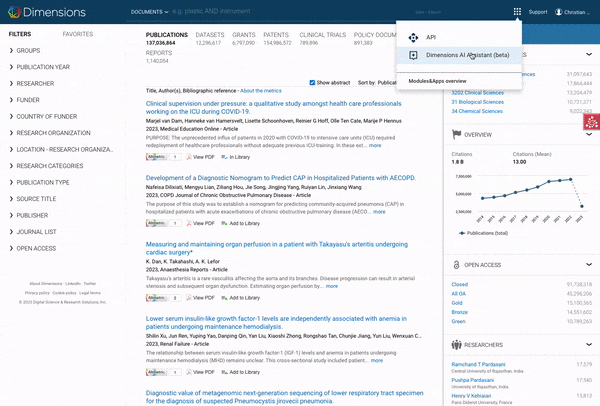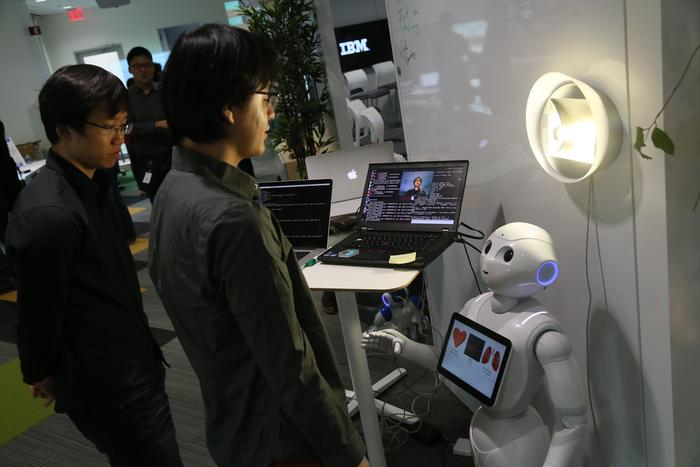Scientists have illuminated the role of heterotrimeric G protein α-subunits in cucumber’s development, a breakthrough in our comprehension of plant organ formation. This insight into the CLAVATA (CLV) signaling cascade may lead to innovative approaches in crop cultivation, promising advancements in both nutritional value and agricultural output.
Tag: discovery research
Tomato timekeeper: NF-YA3b gene’s role in flowering time revealed
Controlling the timing of flowering in crops is crucial for optimizing yields and adapting to climate changes. A recent study has identified a specific gene in tomatoes that regulates this critical phase, providing a significant step forward in the ability to fine-tune agricultural practices and enhance productivity.
Unlocking the grape’s secret: how wounding boosts anthocyanin defenses
A recent study sheds light on the biochemical response of grapevines to wounding stress. It reveals that the transcription factor VvWRKY5 is a key regulator that enhances anthocyanin production, which serves as a protective mechanism for the plant.
Spring awakening: genetic module key to tree peony bud resumption
Revealing the genetic secrets of tree peony buds’ seasonal revival, a crucial study has illuminated the role of the PsmiR159b-PsMYB65 module in steering the cellular mechanisms that dictate the shift from winter slumber to springtime sprouting, pioneering novel pathways in botanical research and gardening techniques.
5-aminolevulinic acid: enhancing tomato resilience against cold stress
Cold stress significantly hampers tomato growth and yield. Recent research reveals that 5-aminolevulinic acid (ALA) enhances cold tolerance in tomatoes by regulating the SlMYB4/SlMYB88-SlGSTU43 gene module. This discovery opens new avenues for genetic engineering to develop cold-resistant tomato varieties, potentially ensuring better crop resilience and productivity under low-temperature conditions.
New Technique Lets Scientists Create Resistance-Free Electron Channels
Researchers have taken the first atomic-resolution images and demonstrated electrical control of a chiral interface state – an exotic quantum phenomenon that could help researchers advance quantum computing and energy-efficient electronics.
How Scientists Are Accelerating Chemistry Discoveries With Automation
Researchers have developed an automated workflow that could accelerate the discovery of new pharmaceutical drugs and other useful products. The new approach could enable real-time reaction analysis and identify new chemical-reaction products much faster than current laboratory methods.
What a “2D” quantum superfluid feels like to the touch
Superfluid feels two-dimensional to touch, with heat flowing along the edges of your finger.
Improved wind speed forecasts can help urban power generation, according to new Concordia research
Navid Shirzadi uses deep learning models that hybridize existing forecasting models
Scientists build on artificial intelligence to create next-generation gastric acid treatment
Nagoya University researchers used AI to design and synthesize a new, highly effective gastric acid inhibitor, demonstrating the potential of AI in pharmaceutical development.
Algorithm and blues: how to judge music plagiarism?
Study investigates how algorithms compare to human judgement in music plagiarism disputes
Icahn School of Medicine at Mount Sinai and the University of California San Diego Receive $8.5 Million Award to Establish a Data Integration Hub for NIH Common Fund Supported Programs
Researchers at the Icahn School of Medicine at Mount Sinai and the University of California San Diego have been awarded an $8.5 million grant to create a data integration hub aimed at accelerating novel therapeutics and cures for diseases within initiatives supported by the National Institutes of Health (NIH) Common Fund.
Department of Energy Announces $73 Million for Basic Research to Accelerate the Transition from Discovery to Commercialization
Today, the U.S. Department of Energy (DOE) announced $73 million in funding for eleven projects which focus on the goal of accelerating the transition from discovery to commercialization of new technologies that will form the basis of future industries.

Digital Science announces exclusive rollout of Dimensions AI Assistant beta version
Digital Science is pleased to announce a limited and exclusive beta launch of Dimensions AI Assistant, a new research tool designed to enhance how users engage with the wealth of knowledge available on Dimensions, among the world’s largest linked research databases.

New fossil flying reptile ‘Elvis’ takes flight
A new 145-million-year-old pterosaur (extinct flying reptiles that lived alongside the dinosaurs) was named today by a team of British, American and German researchers.

AI nursing ethics: viability of robots and artificial intelligence in nursing practice
The recent progress in the field of robotics and artificial intelligence (AI) promises a future where these technologies would play a more prominent role in society. Current developments, such as the introduction of autonomous vehicles, the ability to generate original artwork, and the creation of chatbots capable of engaging in human-like conversations, highlight the immense possibilities held by these technologies.
Digital Science boosts pharma industry support following OntoChem acquisition
Digital Science is positioning itself to play an even greater role in the pharmaceutical industry’s all-important drug discovery, by helping industry sift through a sea of information and focus on the research that matters.
Tiny plastic particles also find their way into the brain
Led by Lukas Kenner (Department of Pathology at MedUni Vienna and Department of Laboratory Animal Pathology at Vetmeduni) and Oldamur Hollóczki (Department of Physical Chemistry, University of Debrecen, Hungary) the research team was able to determine that tiny polystyrene particles could be detected in the brain just two hours after ingestion. The mechanism that enabled them to breach the blood-brain barrier was previously unknown to medical science.
Researchers discover key pathway for COVID organ damage in adults
Even after three years since the emergence of COVID-19, much remains unknown about how it causes severe disease, including the widespread organ damage beyond just the lungs. Increasingly, scientists are learning that organ dysfunction results from damage to the blood vessels, but why the virus causes this damage is unclear.
MSU discovery advances biofuel crop that could curb dependence on fossil fuel
Michigan State University researchers have solved a puzzle that could help switchgrass realize its full potential as a low-cost, sustainable biofuel crop and curb our dependence on fossil fuels.
Previously unknown monumental temple discovered near the Tempio Grande in Vulci
An interdisciplinary team headed by archeologists Dr. Mariachiara Franceschini of the University of Freiburg and Paul P. Pasieka of the University of Mainz has discovered a previously unknown Etruscan temple in the ancient city of Vulci, which lies in the Italian region of Latium.
Diego bows to ancestral sabretoothed mammal
Morphological analysis of the discovered specimen’s tooth shapes helped to determine that the specimen was one of the earliest nimravids dating back 37 to 40 million years. Sabertoothed nimravids were early members of Carnivoramorpha, but dogs and cats did not evolve from them. Changes in ecosystems may have driven the evolution and rise of nimravids.
Artificial Intelligence Edges Closer to the Clinic
TransMED analyzes patient data from similar diseases across multiple sources to understand COVID-19 patient outcome risk factors.
UIC researchers find evidence of possible link between herpes simplex and neurogenerative diseases
A new study by researchers at University of Illinois Chicago suggests that when the protein optineurin, or OPTN, is present in cells it restricts the spread of HSV-1, the herpes simplex virus type 1.In a “first of its kind” study, researchers also found a potential direct connection between neurodegenerative diseases, such as Alzheimer’s disease, amyotrophic lateral sclerosis (ALS), glaucoma, and the herpesvirus.